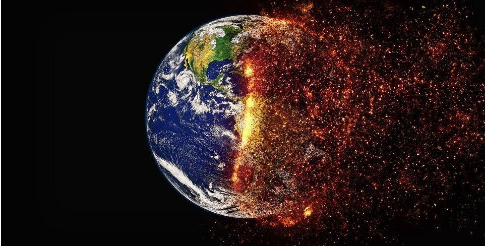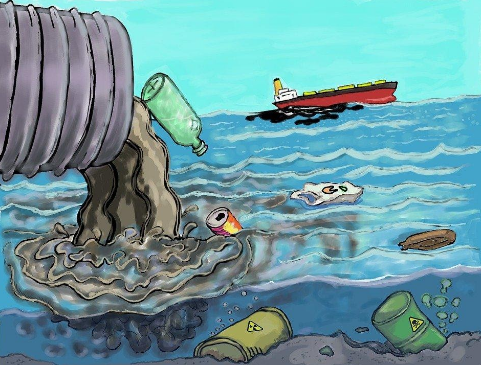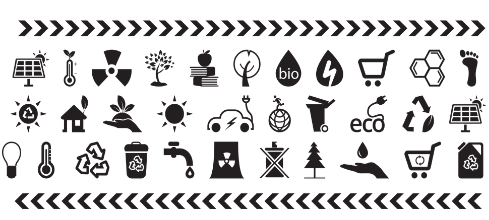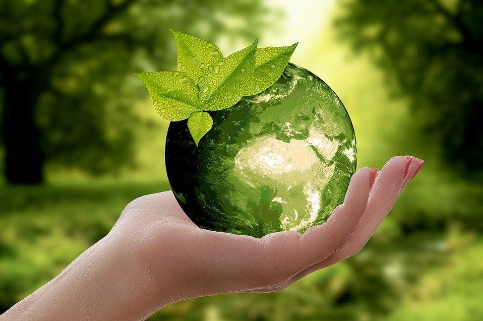Waste is all around us
The planet literally overflows with waste , the source of which is homes, offices, businesses. Garbage is the result of a variety of human activities, and in recent decades we have even talked about space debris.

Environmentalists warn that, for example, with the current rate of plastic generation, it could become more than fish in the seas in just 30 years. The Pacific Ocean already has a floating island of junk.
However, the damage is far from limited to the aquatic world. Waste objects and substances pose a risk to the earth’s ecosystems. There are more and more alarming signals, but the most tangible are climate change and the extinction of some species. That is why caring for the planet is the number one priority for humanity.

Main groups of waste
Waste can be grouped by different indicators such as composition, source, properties, recyclability, etc. According to the risks they pose to the population and the environment, they are divided into dangerous and non-dangerous.
On the other hand, it is easy to apply their distribution according to their origin. The public sectors generate all kinds of garbage, which makes the division widespread, which reduces waste to – household, construction, industrial and radioactive.
Household
Their main source is every household or office . Unfortunately, not only biodegradable waste is disposed of, but increasingly the home is a source of non-degradable and hazardous waste.
The reason is that in our time more varnishes, oils and other chemicals are used, which have become an integral part of people’s daily needs.
Yeah, they’re like that :
- detergents
- various consumables
- lamps
- batteries
- plastic packaging
- medicines and many other objects and substances (which are in each discarded from any house or office)
According to the current legislation, the care of the municipal administration is to organize the removal and disposal of garbage . Also, obsolete household appliances are collected and transported to separate places for processing. To the containers for separate garbage collection, there are already special containers for unnecessary clothes and shoes.
Production
The objects and substances that are released during the production activity, hide the greatest risk for the environment and the waters. For this reason, any such activity must comply with the regulations, the main purpose of which is for the various industries to have a minimal risk to the population and nature.
Wastewater treatment plants, filters, control systems are part of the prescribed obligations to each company, according to its specific production facilities. Their main function is to prevent pollution with harmful substances in the air, soil and water.
Construction
In addition to the waste directly separated during construction, this group also includes all waste from repair and demolition activities. Along with concrete, cement, bricks, metal elements, they include paints, adhesives, mortars, cables, asbestos insulation and many other materials. Like industrial waste, much of the construction waste also carries risks and is classified as hazardous.
Radioactive
Certain ores or residual products from nuclear energy production are characterized as radioactive. All waste from this group is extremely dangerous for people and the world around us. Control over it is extremely strict and requires compliance with international standards and rules for handling such garbage.
Improper storage is also dangerous. The processing of such waste is a complex process, after which they are “buried” in special storage facilities so as not to reach the soil and groundwater.
Waste classification
Environmental experts point to two main ways to tackle the big problem, which has become the ubiquitous accumulation of huge amounts of waste.
On the one hand, options are being sought for their destruction, recycling or re-use. On the other hand, there is an increasing appeal to reduce the rate and amount of waste collection .

Another urgent task is on the agenda. It is increasingly alarming that over the years in various landfills have been stored obsolete objects and substances, for which there is no necessary today information about their origin and composition.
They can be maximized only after these quantities collected over time are sorted and differentiated according to certain standard criteria.
In order to avoid such and other problems, the current regulations require the classification of waste. This is a way to identify them, which must be done from their source, ie. the company that generates them. The basis of this division of objects and substances is their origin and the assessment of the presence of dangerous substances.
The current national classification regulation is in compliance with the existing Waste Management Act. The applied classification is based on a six-digit code, which provide information on different characteristics of the waste.
For example, the paper code is different from the electronics code. When the waste is hazardous, an additional sign is placed after its general designation .
The criteria that underlie the generally applicable division are related to:
- the source
- origin
- composition
- properties (of the waste itself and / or of the raw materials used in the production)
The rules used follow the legislation, which in turn is compliant with international standards . One of the essential roles in waste management is the separation of hazardous waste. This is an important process that is essential in their subsequent treatment.
Sometimes the residual products of a production activity can acquire new characteristics in a certain environment or in contact with other substances. For this reason classification is an important obligation of economic operators in the process of nature protection and care for the safety of the population and animal species.
The general approach to the characterization of discarded objects and substances is also a guarantee to prevent harmful effects.
The correct division helps for a series of activities that are related to the observance of the norms for transport, processing or investment in new productions, so that there is no option to allow risky raw materials to be used in the production of a new product. Classification also applies to important processes related to packaging, labeling and disposal.

Steps in garbage characterization
They are respectively the following several in a row:
- It must first be determined whether the specific waste needs to be classified.
- If he is on the list, he should get his code.
- It is necessary to assess whether the classification according to the indicated identification numbers has been performed correctly.
- Indication of whether the waste or its components are hazardous.
- Grading and evaluation of hazardous ingredients or properties of the waste.
The process requires knowledge and experience , which is possessed by consultants or trained specialists who are familiar with the regulatory framework and have experience in its application.
